We all know that eating a variety of foods rich in vitamins, minerals, and trace nutrients is the best way to enjoy good health and vitality.
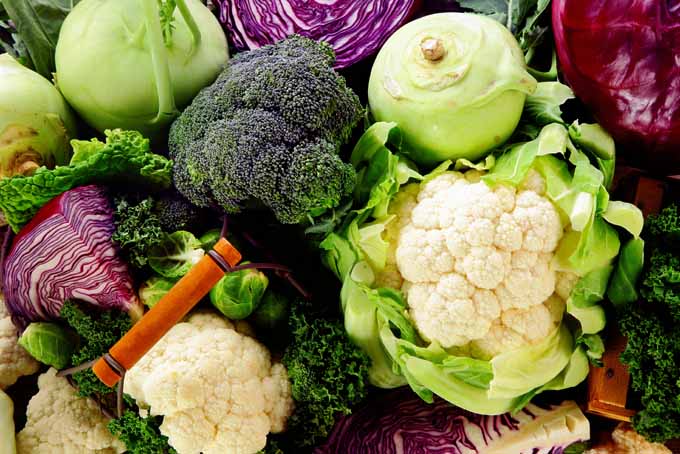
But, with today’s fast-paced lifestyle, finding the time to eat balanced meals can be difficult to achieve.
Yes, we can take supplements, but they’re not the best solution. They’re often expensive, and high doses of one vitamin or mineral can interfere with how our systems use other important nutrients.
Plus, our bodies absorb nutrients best when they’re obtained from natural sources.
A better path to optimal nourishment is to incorporate those nutrient-dense morsels known as super foods.
And no, super foods aren’t just the latest trendy, wizened berry that grows only on the shady side of the frangipani plant at exactly twelve degrees latitude.
Real super foods aren’t particularly glamorous, or more expensive than the price of platinum, nor do they have a little red “S” emblazoned on their chests.
But they are loaded with micro and macronutrients.

Super foods are the common, domestic berries, fruits, vegetables, nuts, seeds, and grains that provide us with an abundance of natural nourishment in the form of carbohydrates, fats, and proteins.
Plus, they also deliver the micronutrients of trace elements and dietary antioxidants (DA). And it’s these antioxidants that are so valuable for the protection and prevention of disease from oxidative stress (OS).
In short, they provide us with everything we need to ensure healthy, balanced nutrition. They’re also affordable, and can easily be worked into meals or snacks without a lot of special preparation.
So let’s have a brief look at why we need dietary antioxidants and the most common causes of oxidative stress, and de-mystify some of the terms used to describe DAs. Then we’ll dish on those 11 tips to easily incorporate these important foods into our eating patterns – so we can all enjoy the best possible health and vitality!
Why Do We Need Antioxidants?
Every living organism uses oxygen to metabolize and convert nutrients into energy, to thrive and survive.
Essential for life, oxygen is also a highly reactive atom with a dual nature – and it definitely has a dark side. It has the potential to become part of damaging molecules known as free radicals that can harm delicate, healthy tissue through oxidation.

Internally, this oxidation is like biological rusting. Think of the green patina that forms on a bright copper pan, or the browning that happens to a cut apple when it’s been exposed to the air – both are the effects of oxidation.
Now, our internal systems will use some of these free radicals to fight the good fight – they can be used to destroy bacteria, detox the liver, eliminate viruses, and perform other beneficial functions.
The problem is when we produce an excessive amount of free radicals, they create the condition known as oxidative stress – an imbalance between pro-oxidants and antioxidant mechanisms.
And when our bodies fall out of balance, with greater levels of free radicals than those of antioxidants, the playing field gets skewed in favor of cell breakdown and disease.
This imbalance can be cumulative and debilitating, and this sets the stage for a host of neurodegenerative maladies such as Alzheimer’s disease and Parkinson’s disease.
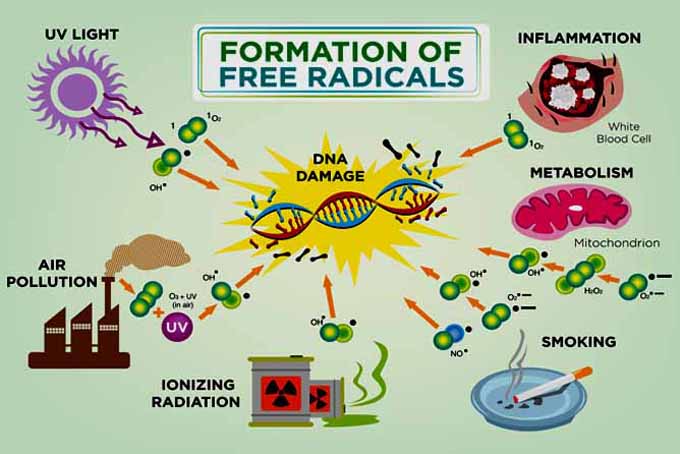
The toxicity of high levels of free radicals also contributes to DNA injury, cardiovascular disease, chronic inflammation, immune system malfunctions, premature aging, cancers, and tissue damage.
It’s in this arena that dietary antioxidants play such a valuable role, as they’re capable of stabilizing and deactivating free radicals before they attack healthy cells.
And as our bodies don’t make all of the antioxidants we need to keep free radicals in check, dietary antioxidants are a highly viable therapeutic remedy.
Food-based antioxidants consumed on a regular basis will scavenge free radicals, which alters the effects of neuronal damage, and restores balance to internal systems.
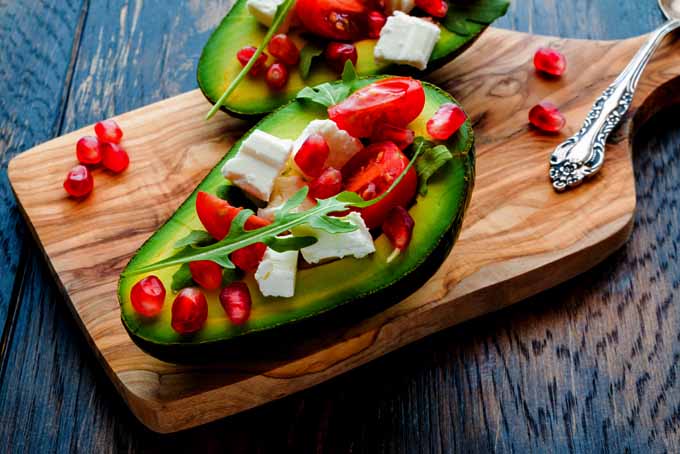
These super food antioxidants are not only important for good nutrition; they also do an incredible job of repairing damaged tissue, which is often caused by poor dietary choices.
Common Causes of Oxidative Stress
One of the most common factors of OS is a poor diet with inadequate nutrition – too many hydrogenated fats, too much sugar, and too much animal protein, preservatives, artificial food dyes and flavorings, paired with too little water, fresh fruits, and vegetables.
Other leading causes are overexposure to environmental toxins (like water and air pollution, cigarette smoke, chemical cleaners, plastics and phthalates, and pesticides on food), internal microbial imbalances, and unhealthy behavioral patterns such as too much alcohol and excessive prescription drug use, as well as psychological and emotional stress.
Once again, it’s easy to see how dietary choices play such an important role in our overall health and well-being. Poor choices lead to disease and premature aging, while smart ones can lead to healing and health.
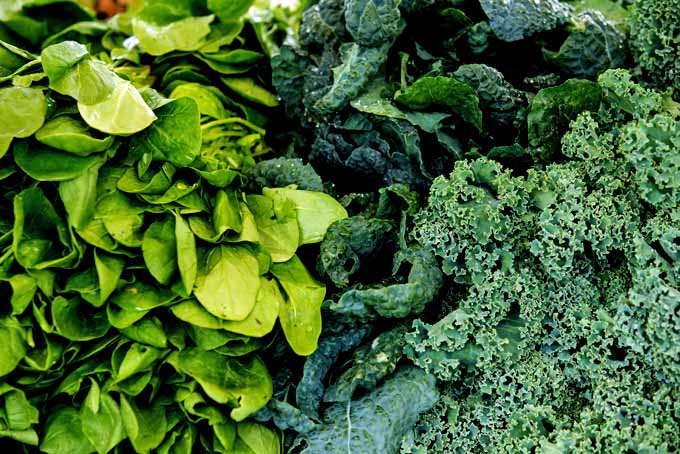
So, one of the easiest ways to prevent the damage caused by OS is to make a few simple changes, like avoiding the substances and behaviors mentioned above – and incorporating new, healthy choices and actions.
Antioxidants 101
There’s a confusing amount of buzzwords in antioxidant terminology, so here’s a brief primer on some of the ones you’ll want to know for a sound diet:
Antioxidants
An antioxidant is a substance that inhibits oxidation, or removes potentially damaging oxidizing agents (i.e. free radicals) within a living organism.
Phytochemicals
Antioxidants are phytochemicals, naturally occurring chemical compounds found in plants that give them their particular properties. “Phyto” is simply Greek for plant.
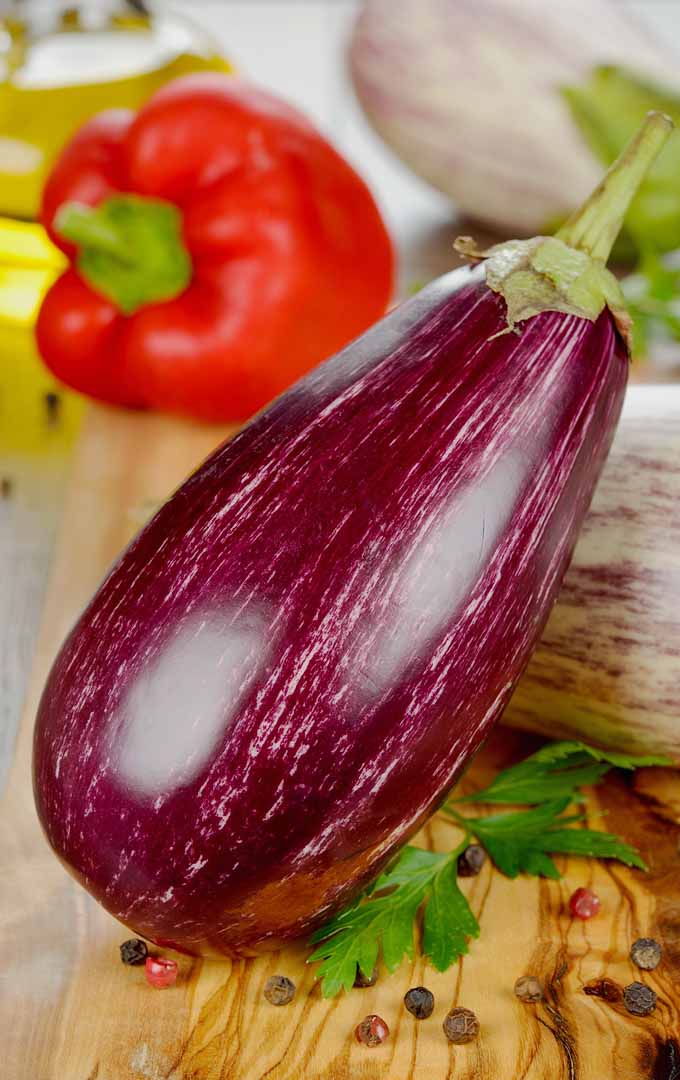
These compounds can be vitamins and nutrients, and they add color (like you’ll see in the purple skin of an eggplant in our spicy eggplant curry), fragrance (a la the pungent odor of garlic), and flavors (like the bitter taste of over-brewed tea).
The phytochemicals with the greatest dietary antioxidant properties can be found in the following primary groups.
Vitamins C and E
A powerful antioxidant, vitamin C can neutralize harmful free radicals, and assists in counterbalancing the effects of pollutants and toxins.
Also known as ascorbic acid, it also prevents the formation of potentially carcinogenic cell structures, and helps to regenerate other antioxidants like vitamin E.
It also plays an important role in helping the eyes to deal with oxidative stress, delaying the progress of age-related macular degeneration and vision loss.
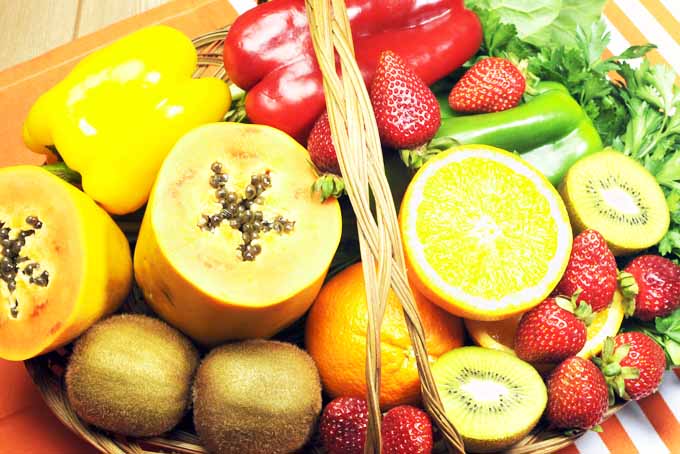
Excellent levels of vitamin C are found in numerous fruits and vegetables:
Berries
- Blueberries
- Blackberries
- Blackcurrants
- Cranberries
- Raspberries
- Strawberries
Leafy Green Veggies
- Beet greens
- Bok choy
- Collard greens
- Kale
- Mustard greens
- Spinach
- Swiss chard
Cruciferous Veggies
- Broccoli
- Brussels sprouts
- Cabbage
- Cauliflower
Other Veggies
- Asparagus
- Bell peppers
- Carrots
- Fennel
- Green beans
- Green peas
- Sweet potatoes
- Tomatoes
- Winter squash
Other Fruits
- Cantaloupe
- Kiwi
- Melons
- Papaya
- Pineapple
- Plums
Citrus Fruits
- Grapefruit
- Lemons
- Limes
- Oranges
Herbs
- Basil
- Parsley
- Thyme
Vitamin E is also an important antioxidant, as it aids the body in neutralizing the harmful oxidation of fats, plays a vital role in stopping free radical production, and helps maintain a healthy immune system.
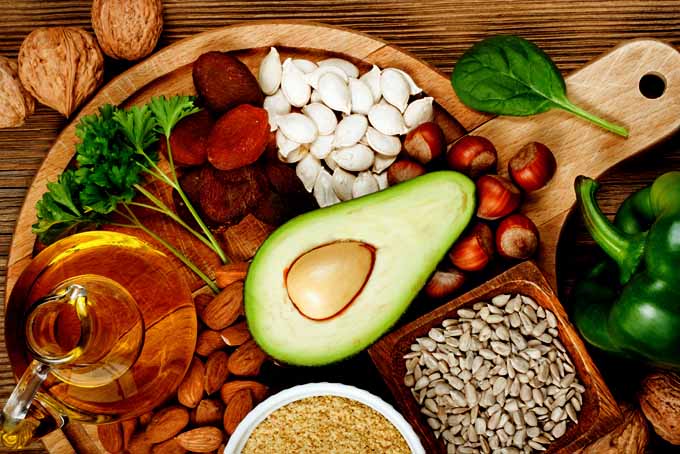
Sometimes referred to as alpha-tocopherol, vitamin E is also readily available from many natural sources:
Seeds, Nuts, and their Oils
- Almonds
- Hazelnuts
- Olives
- Peanuts
- Sunflower seeds
- Walnuts
Dark Leafy Greens
- Beet greens
- Kale
- Mustard greens
- Spinach
- Swiss chard
- Turnip greens
Other Veggies
- Asparagus
- Avocado
- Bell peppers
- Broccoli
- Carrots
- Chili peppers
- Green beans
- Tomatoes
Fruits and Berries
- Cranberries
- Kiwi
- Raspberries
Carotenoids
Carotenoids are important antioxidants for our diet because they help to protect our eyes, improve cardiovascular and skin health, support the immune system, and may prevent the formation of tumors.
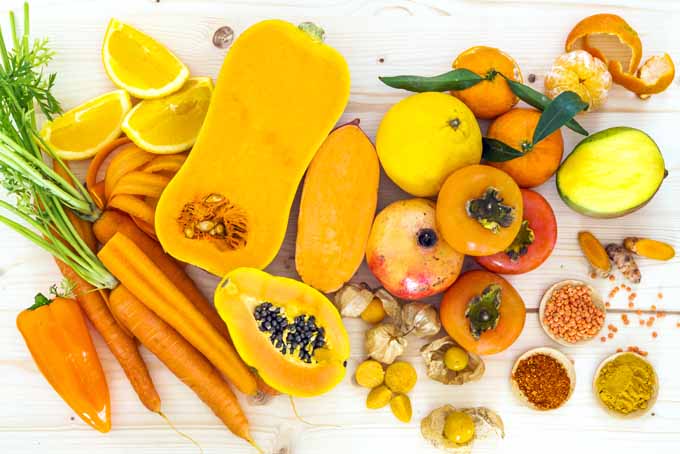
Carotenoids give plants their bright yellow, red, and orange pigments. These include alpha-carotene, beta-carotene, lutein, lycopene, and zeaxanthin.
The following foods are the best sources of natural carotenoids:
Red, Orange, and Yellow Produce
- Apricots
- Cantaloupe
- Carrots
- Mangoes
- Papaya
- Peppers
- Plums
- Sweet potatoes
- Tomatoes
- Winter squash
Dark Leafy Greens and Herbs
- Beet greens
- Collards
- Cilantro
- Dandelion greens
- Kale
- Spinach
- Thyme
- Turnip greens
Polyphenols
The largest group of phytochemicals are polyphenols, also known as phenolics, of which there are over 4,000 compounds – many of which are powerful antioxidants.
Polyphenols play an important role in the prevention and reduction of chronic diseases such as cancers, diabetes, cardiovascular disease, and neurodegenerative diseases.
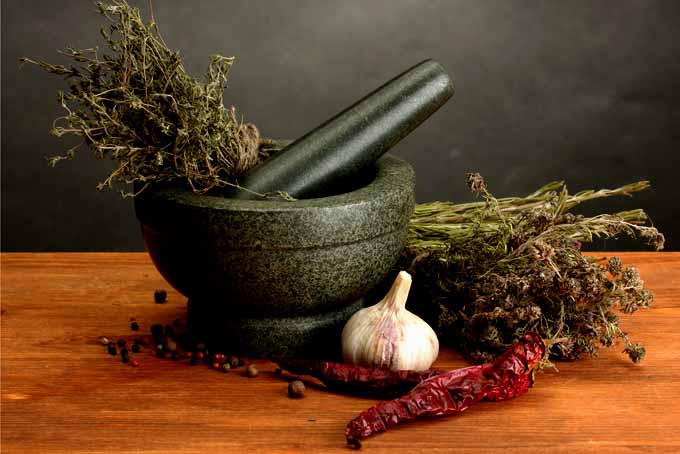
A common polyphenol that give fruits and veggies their red, blue, and colors are anthocyanins, a photosynthetic pigment known for its photo-protective properties.
Polyphenols also contribute strong and astringent tastes to foods. Here’s a few well-known examples that add pungent flavor:
- Capsaicin in chilies
- Cinnamic acid in cinnamon
- Curcumin in turmeric
- Piperine in peppercorns
- Resveratrol in red wine
- Rosmarinic acid found in rosemary, thyme, oregano, sage and peppermint
No, we’re not going to torture you with the names of all 4,000 compounds! You get the drift – different food groups contain different polyphenols that have different functions.
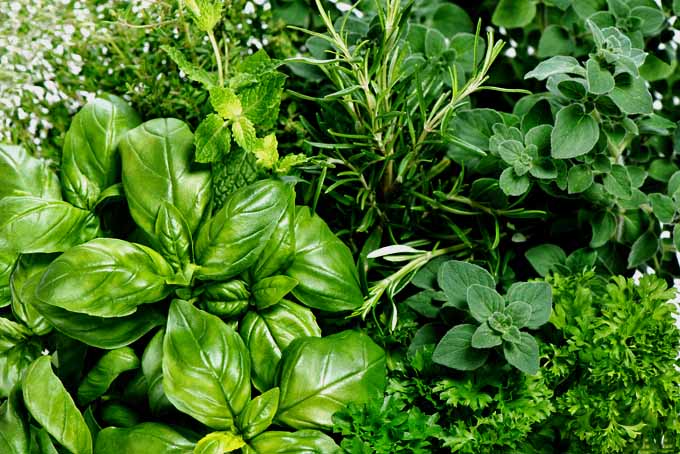
High quality herbs and spices, fruits and berries, vegetables, seeds, and nuts are among the best sources of polyphenols, according to the latest in the Phenol-Explorer database.
You can attain useful dietary polyphenols from these groups of foods:
Berries and Other Fruits
Apples, apricots, blackberries, black elderberries, black chokeberries, black currants, blueberries, cherries, plums, pomegranates, purple and black grapes, quince, raspberries, and strawberries.
Seeds, Legumes, and Nuts
Almonds, black and white beans, chestnuts, flaxseed, hazelnuts, pecans, tempeh (soy), walnuts, soy flour, and whole grain wheat flour.
Vegetables
Asparagus, broccoli, carrots, chicory, endive, globe artichokes, green and black olives, red and yellow onions, potatoes (with the skins), shallots, and spinach.
Seasonings
Capers, caraway seed, celery seed, cinnamon, cloves, curry powder, dried basil, dried Mexican oregano, dried mint, dried parsley, dried rosemary, dried sage, dried and fresh thyme, ginger powder, and star anise.
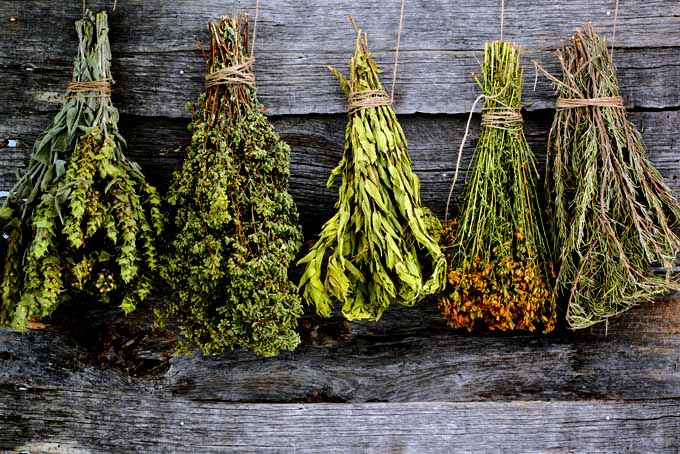
Beverages and Other Foods
Cocoa powder, coffee, dark chocolate (at least 60 percent cocoa), red wine, and teas (green, black, and white). Pure apple, blood orange, grapefruit, and pomegranate juices.
And now, on to those tips!
1. Eat the Peels
Whenever possible, leave the skins on fruit and vegetables. They often contain higher levels of nutrients than the pulp.
Instead of peeling, clean them well before consuming. To clean, rinse produce with fresh, running water or immerse in a solution of baking soda and vinegar if you’re concerned about pesticides. Buying organic can also lessen your pesticide load.
Eat soft skins such as apple, carrot, yam, and potato peels, and cook veggies with hard skins, like winter squash, with the skin on – then scrape as close to the skin as possible to get the most nutrients.
Juicing is another great way to enjoy the nutritional benefits of peels, particularly those that aren’t really appetizing to eat. Green juices that are high in veggies and lower in sugary fruit content are usually healthier options.
To get as many nutrients as possible, juice fruits and veggies with fuzzy or textured skins in place, such as kiwi and beets – you’ll never notice the peels when you’re sipping on a refreshing blend!
2. Spice It Up
Add flavor and dimension to dishes with antioxidant-rich spices, such as black pepper, cayenne, cloves, cinnamon, garlic, ginger, and turmeric.
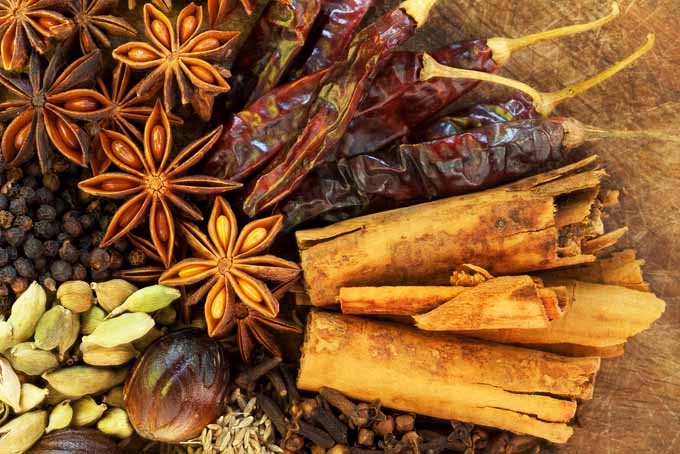
Add a dash of cinnamon to your morning coffee, or to a bowl of breakfast cereal, oatmeal, or yogurt.
Turmeric is a perfect flavoring component in our savory red lentil stew with kale.
A pinch of cloves added to vegetable dishes such as carrots, yams, winter squash, and green beans adds bright flavor. A bit of cayenne sprinkled onto a salad does the same.
You can make your own delicious spicy turmeric tea with cloves, cinnamon, ginger, black pepper, nutmeg, and cardamom. Brew for 20 minutes, strain, and serve with a splash of non-dairy creamer and local honey for a refreshing drink that’s absolutely loaded with antioxidants.
Another good option is to have jars of homemade chimichurri and hot sauces on the table – between the two, you can add flavor and polyphenols to a variety of savory dishes.
3. Go Seedy
Seeds offer great flavor and crunch, and they provide healthy fats as well as beneficial antioxidants.
Enjoy seeds by adding them to your morning cereal, oatmeal, or yogurt, or sprinkle some on top of a lunchtime salad.
Combine a couple of tablespoons of raw, unsalted seeds from a selection of ground flaxseed, sunflower seeds, sesame seeds, and pumpkin seeds. They’ll add delicious flavor and wonderful texture, plus you’ll get an excellent dose of vitamin E and healthy omega-3 oils.
4. Have One Green Vegetable Every Day
Whether it’s fresh microgreens in a salad blend, leafy greens like kale, spinach, root veggie tops (mustard, turnip, kohlrabi, beets), or cruciferous greens like broccoli, Brussels sprouts, or cabbages, these veggies pack a nutritional wallop that’s hard to beat.
Abundant sources of vitamins C and E, carotenoids are also found in green veggies. So dig deep into this nutrient treasure trove!
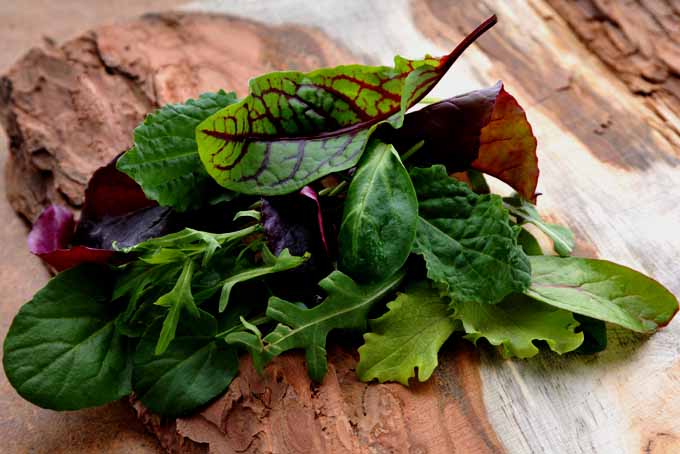
Baby microgreens can go into a salad fresh, but most other types of greens deliver more nutrients when they are lightly cooked.
Use a steam basket to cook gently and release nutrients, then drizzle with a homemade vinaigrette or healthy oil. Try our tips for adding flavor to steamed veggies.
Or, chop and quickly saute in a healthy oil with some antioxidant-rich flavoring add-ins like ginger, garlic, hot peppers, and onions.
Leafy green veggies are a natural for the juicer, and they can be made into a tasty, nutritious blend with other vegetable and fruits as well.
5. Bring on the Berries
Packed with powerful antioxidants, berries are loaded with vitamin C and anthocyanins – and adding a serving a day is easy and delicious.
Plus, freezing berries doesn’t have any detrimental effect on beneficial nutrient levels. This is good news, since you can take advantage of seasonal sales and freeze a flat or two to have on hand when summer’s over.
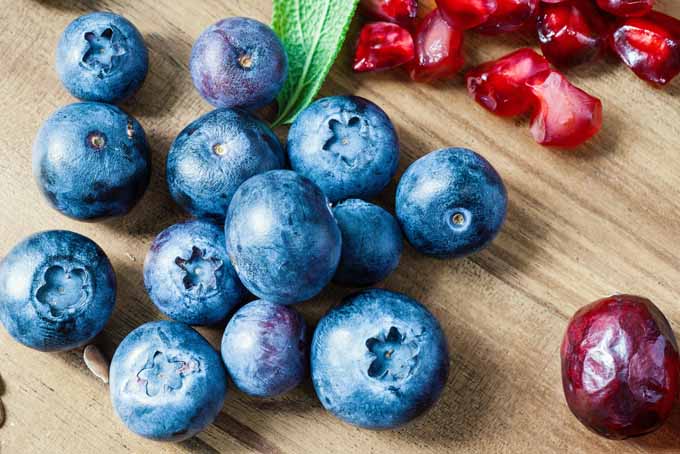
Add a daily serving to breakfast dishes like buttery scones, cereal, porridge, or yogurt, or to a smoothie, lassi, or the juicer. Make frozen berry bars to beat the summer heat, whip up a berry vinaigrette, add them to fruit salads, or snack on a bowl of fresh or frozen berries straight up.
It doesn’t matter much which types of fresh berries you use, they all pack a healthy dose of nutrients – although the deeper and richer the color, the greater nutrient levels. Blueberries, blackberries, black currants, black chokeberries, raspberries, and strawberries are all good options.
A Word of Caution About Using Dried Berries:
While nutrient loss is low in terms of antioxidant levels, the kicker is in the sugar levels – which concentrate in dehydration, and become particularly apparent since you’re likely to eat more.
For an equivalent amount of fresh berries, calories and grams of sugar will increase about fourfold in dried berries.
So, if one cup of fresh blueberries has 14 grams of sugar, the same measure for dried will skyrocket to 56 grams of sugar. Best to avoid this form if you’re looking for health benefits!
6. Get Your Vitamin C in the Morning
To enjoy the many nutritional perks of vitamin C, which include protecting against colds, drink a glass of orange juice with breakfast, and you’ll have an added boost of protection against germs and viruses all day.
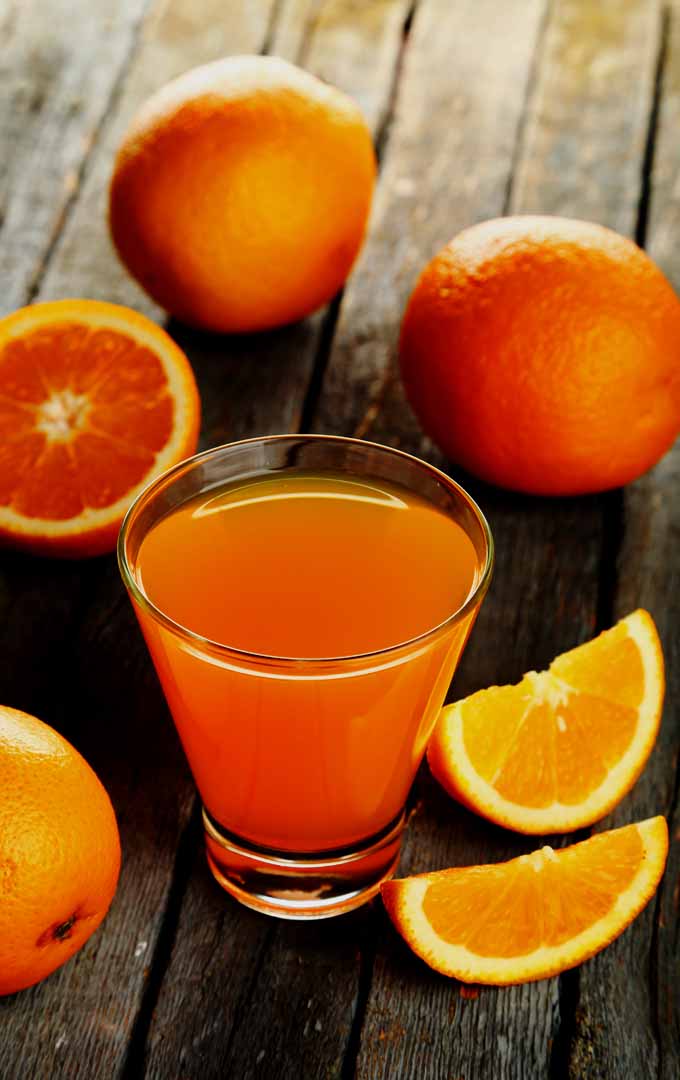
Or, add half a cup of C-rich fruit to your morning breakfast, like sliced strawberries or kiwi.
The point is, our bodies don’t manufacture vitamin C. So, bolster your immune system in the morning – before you go out into the world with its germs, cold bugs, and many viruses.
7. Enjoy a Mid-Afternoon Power Snack
If your energy tends to lag in the late afternoon, have a power snack of nuts and dark chocolate.
An ounce of almonds, Brazil nuts, hazelnuts, or pine nuts all have outstanding amounts of vitamin E and several important trace elements.
And nuts also contain healthy oils, which will help you to feel fuller for longer – making it easier to avoid snacking on junk food.
Mix in an ounce of dark chocolate (with at least 60 percent cocoa) for more flavonoids and a chocolatey taste, and this tasty snack will never leave you feeling deprived!
8. Take Time for a Spot of Tea
Actually, both coffee and tea have high levels of disease-busting antioxidants.
However, if caffeine consumption is a concern, try switching to tea after you’ve had your morning jolt of java.
White, green, black, and oolong teas all come from the same evergreen plant, camellia senensis, so any of these options will deliver handsome amounts of healthy polyphenols.
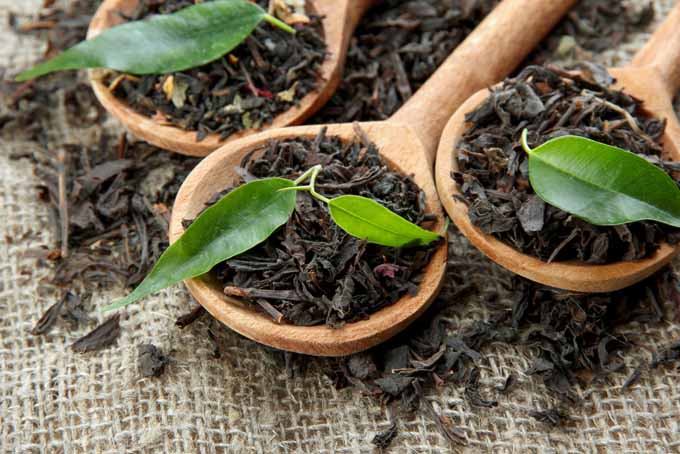
Black teas have the most caffeine, with a bit less as you get into the green varieties.
Teas need to be hot brewed to release the flavonoids, but don’t steep for too long, as the flavor can turn bitter – pour a cup at five minutes for the best flavor and benefits, less for some varieties, particularly green and white teas.
Herbal teas are tasty, and definitely have their place in the kitchen and medicine cabinet. But they usually come from the leaves, flowers, roots, and stems of a variety of plants other than the tea plant – so don’t look to them for the same benefits.
And of course, watch what you add to your tea and coffee. Cream, sugar, and flavored syrups quickly add calories, and turn a healthy brew into something more like a sugary dessert.
9. Switch to a Bordeaux Red for the Dinner Table
If you enjoy a glass of wine with dinner, opt for a deep, dark red over a white or rose.
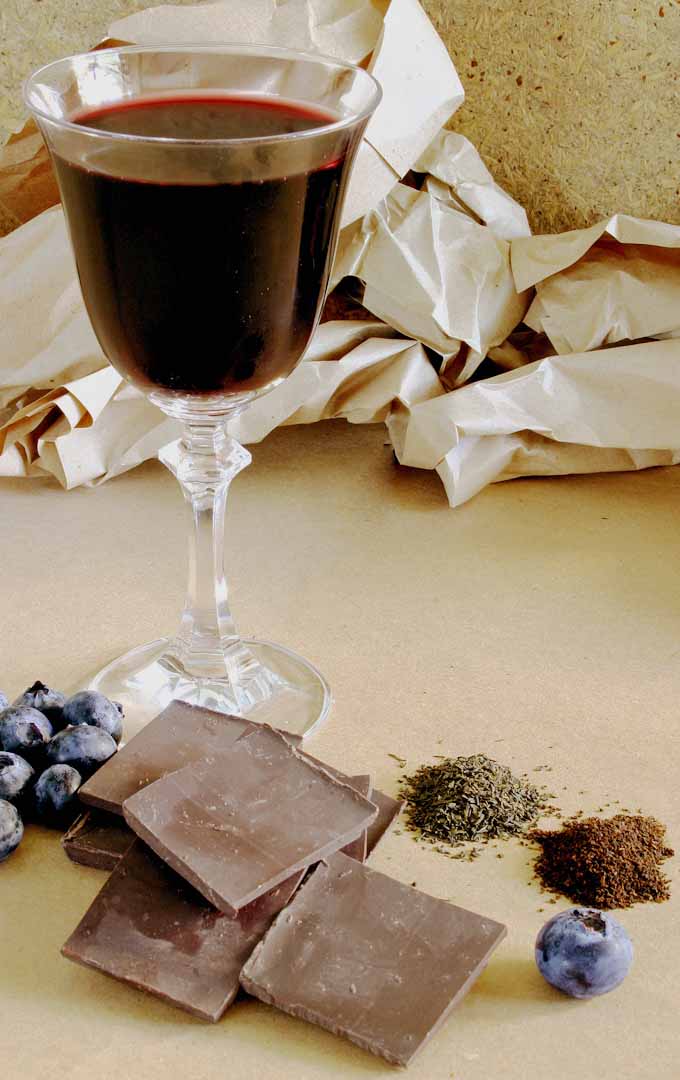
The dark colored grapes used in red wines contain more anthocyanins than green grapes, and they also produce another potent polyphenol called resveratrol.
Keep it to a single serving for the ladies and a max of two glasses for men per day. Excessive alcohol consumption can actually increase your free radical count, so please imbibe in moderation.
10. Drizzle on a Drop of Healthy Oil
Many groups of polyphenols are lipid-soluble. This means your body will absorb their nutritional benefits better when consumed with a fat.
Naturally, we want that fat to be a healthy one. So for cooked veggies, switch out the butter, margarine, cream, and salty or sweet sauces for a light drizzle of healthy monounsaturated oils.
Varieties such as almond, avocado, coconut, flaxseed, grapeseed, hemp, olive, peanut, or walnut oils contain phytochemicals like vitamin E and alpha linolenic acid.
And for salads, leave the preservative-laden dressings on the store shelf. Whip up your own herb or berry vinaigrette, or simply toss your salad with one of the lighter-tasting, nutritious oils mentioned above, and a splash of beneficial vinegar.
The fresh dressing with vinegar, oil, and herbs made in our classic Greek salad is another perfect option to consider!
11. Remember to Eat Your Carrots

Carrots are rich in beta carotene, an antioxidant that our bodies can’t create, and one that’s best obtained from dietary sources – and they can be added to all sorts of dishes.
Top a dinner salad with sliced carrots for a satisfying crunch, or keep carrot sticks on standby in the fridge for snacks.
Shred them up and add to coleslaw, grate some into your tomato sauce, add them to roasts, stir fries, veggie medleys, and meatless chili. Grill them on the barbecue, or roast them in the oven, on their own or with other tasty root vegetables for delicious, sweet flavors.
Pulling It All Together
The USDA’s My Plate plan now recommends that half of your plate at each meal be filled with fruits and vegetables to get proper, balanced nutrition.
And an easy rule of thumb for a healthy menu is to ensure those fruit and vegetables come in a rainbow of colors, so you can be confident you’re getting all the nutrition needed for optimal health – including a variety of antioxidants.
By adding a broad selection of these healthy foods to your daily menu, you’re increasing your changes of getting all the nutrients needed from natural sources. And your body will have the best chance of absorbing them and putting them all to work for you.
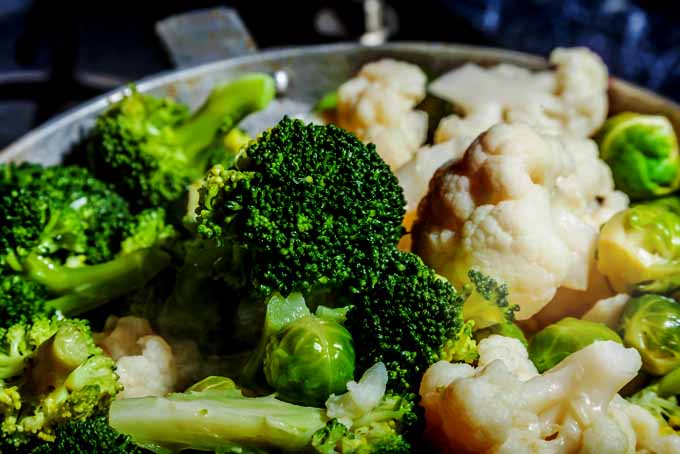
Simply feasting on a particular food with high levels of polyphenols is only going to provide a limited benefit. And no single antioxidant will do all of the work for health and healing – they’re much more effective when working in tandem with other nutrients.
When it comes to antioxidants, quantity isn’t the big factor; the mix is what’s important.
In addition to increasing your consumption of antioxidant-rich super foods, reducing your sugar and processed food intake will also help to lower levels of oxidative stress. Do this, and the foods you do eat will work better, and last longer.
It’s time to get cooking!
What are your favorite dishes to make at home that feature healthy antioxidants? Let us know in the comments.
Don’t forget to Pin It!
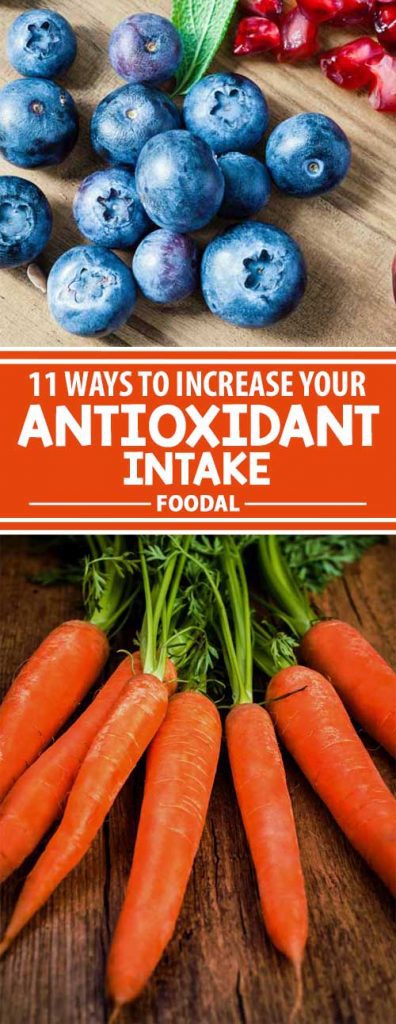
The staff at Foodal are not medical professionals and this article should not be construed as medical advice. Foodal and Ask the Experts, LLC assumes no liability for the use or misuse of the material presented above. Always consult with a medical professional before changing your diet or using supplements or manufactured or natural medications.
Photo credit: Shutterstock.
About Lorna Kring
Recently retired as a costume specialist in the TV and film industry, Lorna now enjoys blogging on contemporary lifestyle themes. A bit daft about the garden, she’s particularly obsessed with organic tomatoes and herbs, and delights in breaking bread with family and friends.



